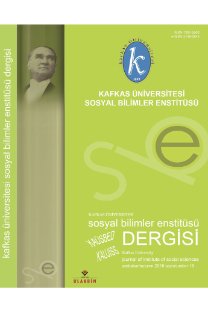Basketbolcuların pozisyonlara göre performansla ilgili fiziksel uygunluklarının karşılaştırılması
The comparision of selected physiological of basketball players according to their playing positions
___
BAVLI, Ö. 2008: “Adölesan Dönem Basketbolcularda Mevkilere Göre Yapısal ve Motorik Özelliklerin Karşılaştırılması”, Niğde Üniversitesi Beden Eğitimi ve Spor Bilimleri Dergisi, 2(3);174-181.CARTER, J.E-ACKLAND, T.R-KERR, D.A.-STAPFF, A.B. 2005: “Somatotype and Size of Elite Female Basketball Players, Journal of Sports Sciences”, 23(10): 1057-63.
CİCİOĞLU, İ., 1995: “Pliometrik Antrenmanın 14-15 Yaşgrubu Basketbolcuların Dikey Sıçraması ile Bazıfiziksel ve Fizyolojik Paremetreler Üzerine Etkisi”, Gazi Üniversitesi Sağlık Bilimleri Enstitüsü, Yüksek lisans Tezi, Ankara.
ERDAĞLI, A.C., 2003: “Lise Düzeyinde Basketbol, Voleybol ve Hentbol Takımlarındaki Sporcuların Fiziksel ve İzyolojik Parametrelerinin Karşılaştırılması”, Sağlık Bilimleri Enstitüsü Yüksek Lisans Tezi, İzmir.
LATIN, R.W.-BERK, K.-BAECHLE, T. 1994: “Physical and Performance Characteristics of NCAA Division I Male Basketball Players” J. Strength Cond. Res. 8:214-218.
MCINNES, S.E.-CARLSON, J.S.-JONES, C.J.-MCKENNA M.J., 1995: “The Physiological Load İmposed on Basketball Players During Competition”. J.Sports Sci..13:387-97.
PAMUK, Ö., KAPLAN, T., TAŞKIN, H., ERKMEN, N. 2008: “Spormetre” Beden Eğitimi ve Spor Bilimleri Dergisi, 6 (3) 141-144.
SEVİM, Y. 2010: Antrenman Bilgisi (3. Baskı), Pelin Ofset Tipo Matbaacılık, Ankara, 17-21.
TAMER, K. 2000: Sporda Fiziksel-Fizyolojik Performansın Ölçülmesi ve Değerlendirilmesi, 3. Baskı, Bağırgan Yayınevi, Ankara, 32- 34.
- ISSN: 1307-5500
- Yayın Aralığı: 2
- Başlangıç: 2008
- Yayıncı: Kafkas üniversitesi Sosyal Bilimler Entitüsü
Stefan Zweig’ın “Acı Duygular” adlı romanında özyaşamöyküsünden izler
Nahçıvan Özerk Cumhuriyetinde ipekçiliğin gelişimi tarihi
Ali Osman ENGİN, RASİM TÖSTEN, M. Dursun KAYA, Yavuz Selim KÖSELİOĞLU
1927-1928 Devlet Salnamesinde Sinop Vilayeti
Basketbolcuların pozisyonlara göre performansla ilgili fiziksel uygunluklarının karşılaştırılması
HAMZA KÜÇÜK, Erol DOĞAN, M. Yalçın TAŞMEKTEPLİGİL
Lise Öğrencilerinin Almanca öğrenme sürecinde başarısızlık nedenlerinin değerlendirilmesi.
Bahar İŞİGÜZEL, Bülent KIRMIZI
